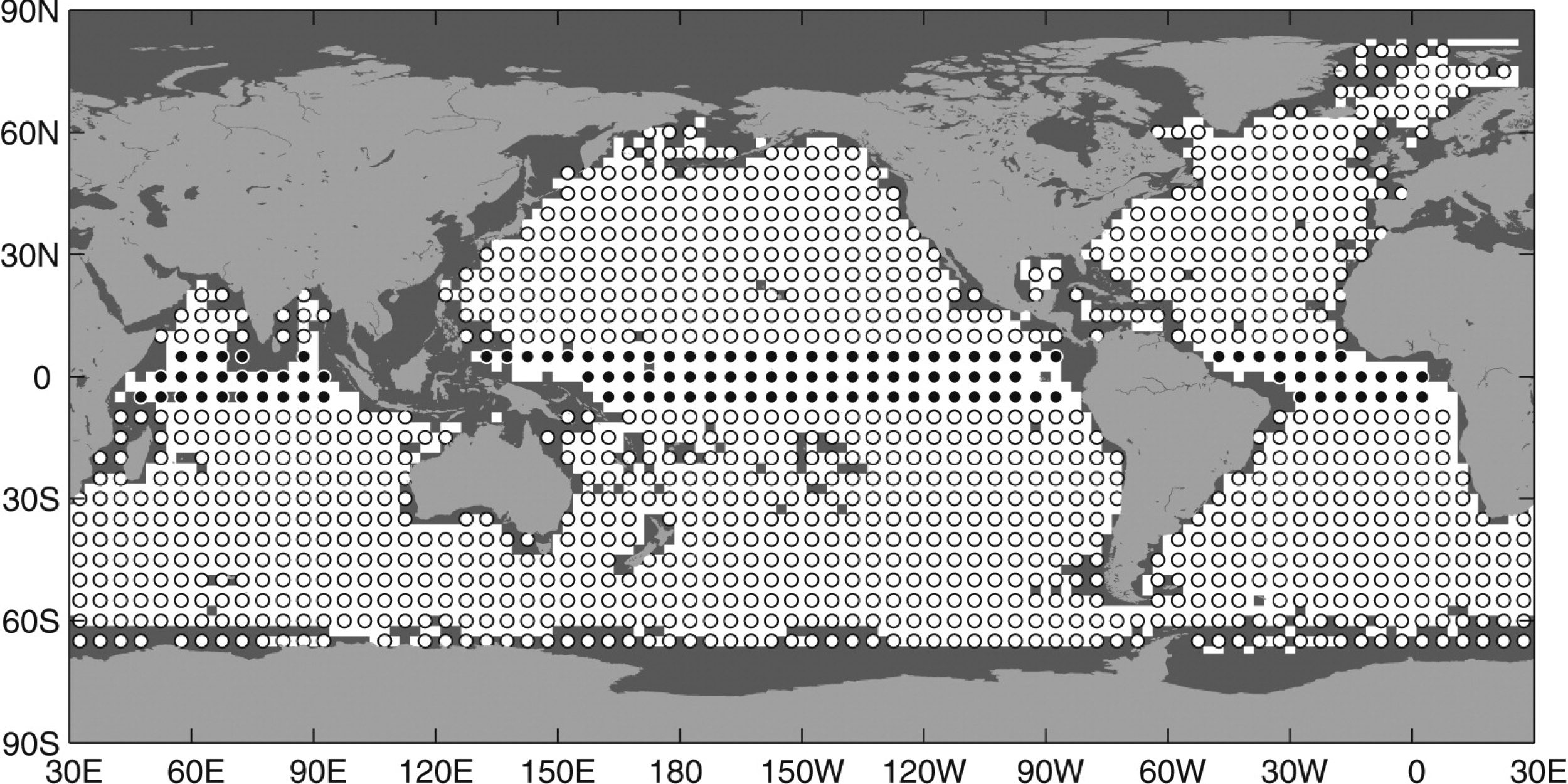Recent research supported by CPO’s Climate Observation Division and published in the Journal of Atmospheric and Oceanic Technology examines the 5×5 degree resolution requirements for the Global Ocean Observing System’s (GOOS) surface temperature and velocity measurements.


Abstract:
The Global Ocean Observing System (GOOS) requirements for in situ surface temperature and velocity measurements call for observations at 5° × 5° resolution. A key component of the GOOS that measures these essential climate variables is the global array of surface drifters. In this study, statistical observing system sampling experiments are performed to evaluate how many drifters are required to achieve the GOOS requirements, both with and without the presence of a completed global tropical moored buoy array at 5°S–5°N. The statistics for these simulations are derived from the evolution of the actual global drifter array. It is concluded that drifters should be deployed within the near-equatorial band even though that band is also in principle covered by the tropical moored array, as the benefits of not doing so are marginal. It is also concluded that an optimal design half-life for the drifters is ~450 days, neglecting external sources of death, such as running aground or being picked up. Finally, it is concluded that comparing the drifter array size to the number of static 5° × 5° open-ocean bins is not an ideal performance indicator for system evaluation; a better performance indicator is the fraction of 5° × 5° open-ocean bins sampled, neglecting bins with high drifter death rates
Access the full report: http://journals.ametsoc.org/doi/full/10.1175/JTECH-D-15-0255.1



